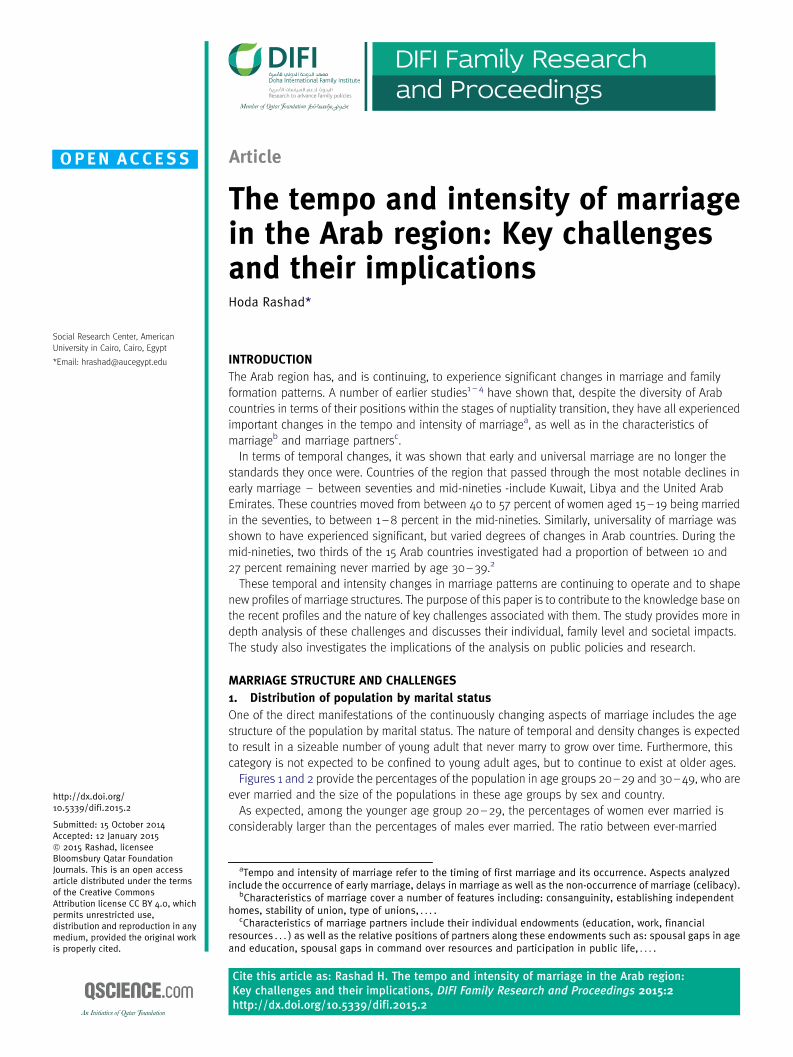-
oa The tempo and intensity of marriage in the Arab region: Key challenges and their implications
- Source: Doha International Family Institute Journal, Volume 2015, Issue 1, Apr 2015, 2
-
- 15 October 2014
- 12 January 2015
- 17 April 2015

The tempo and intensity of marriage in the Arab region: Key challenges and their implications, Page 1 of 1
< Previous page | Next page > /docserver/preview/fulltext/difi/2015/1/difi.2015.2-1.gif

Article metrics loading...

Full text loading...
References


Data & Media loading...

